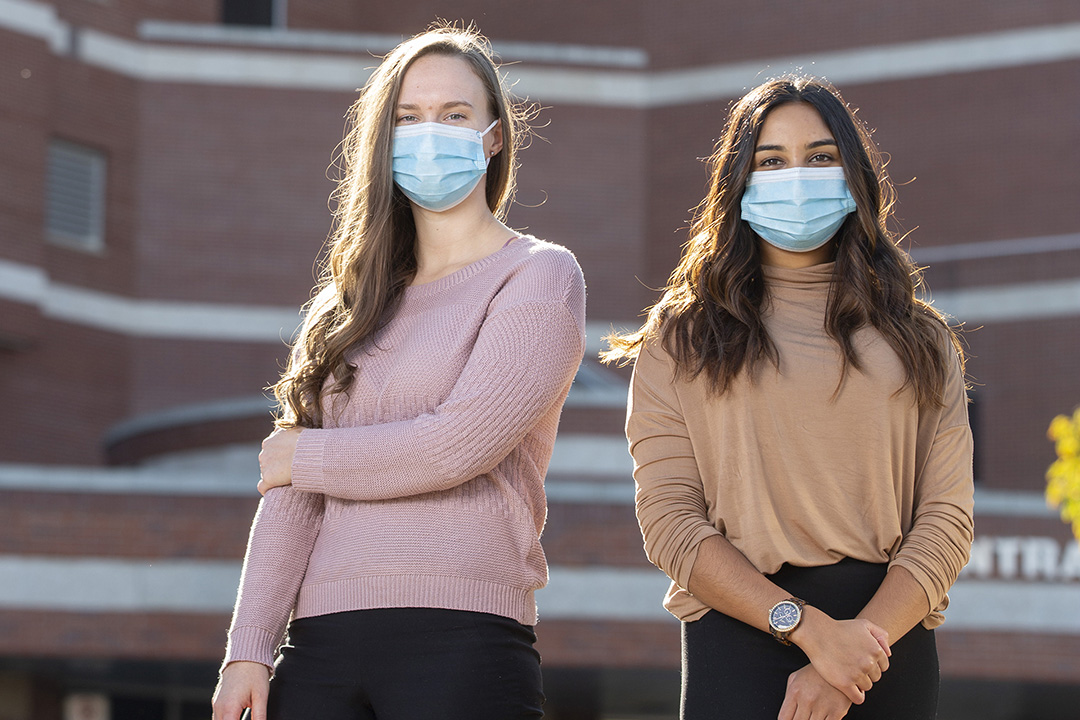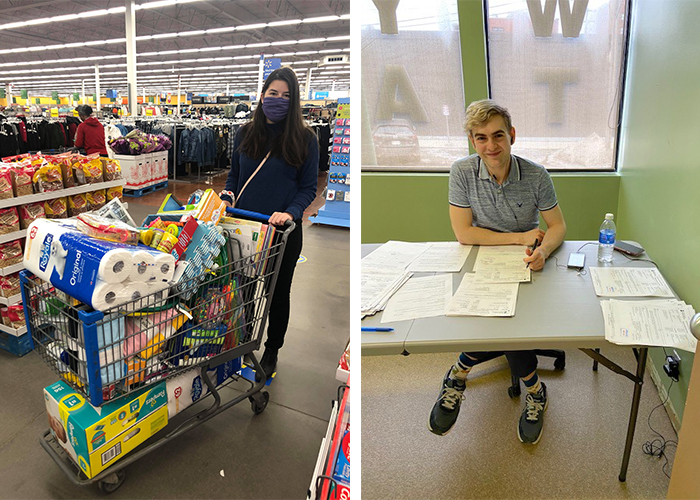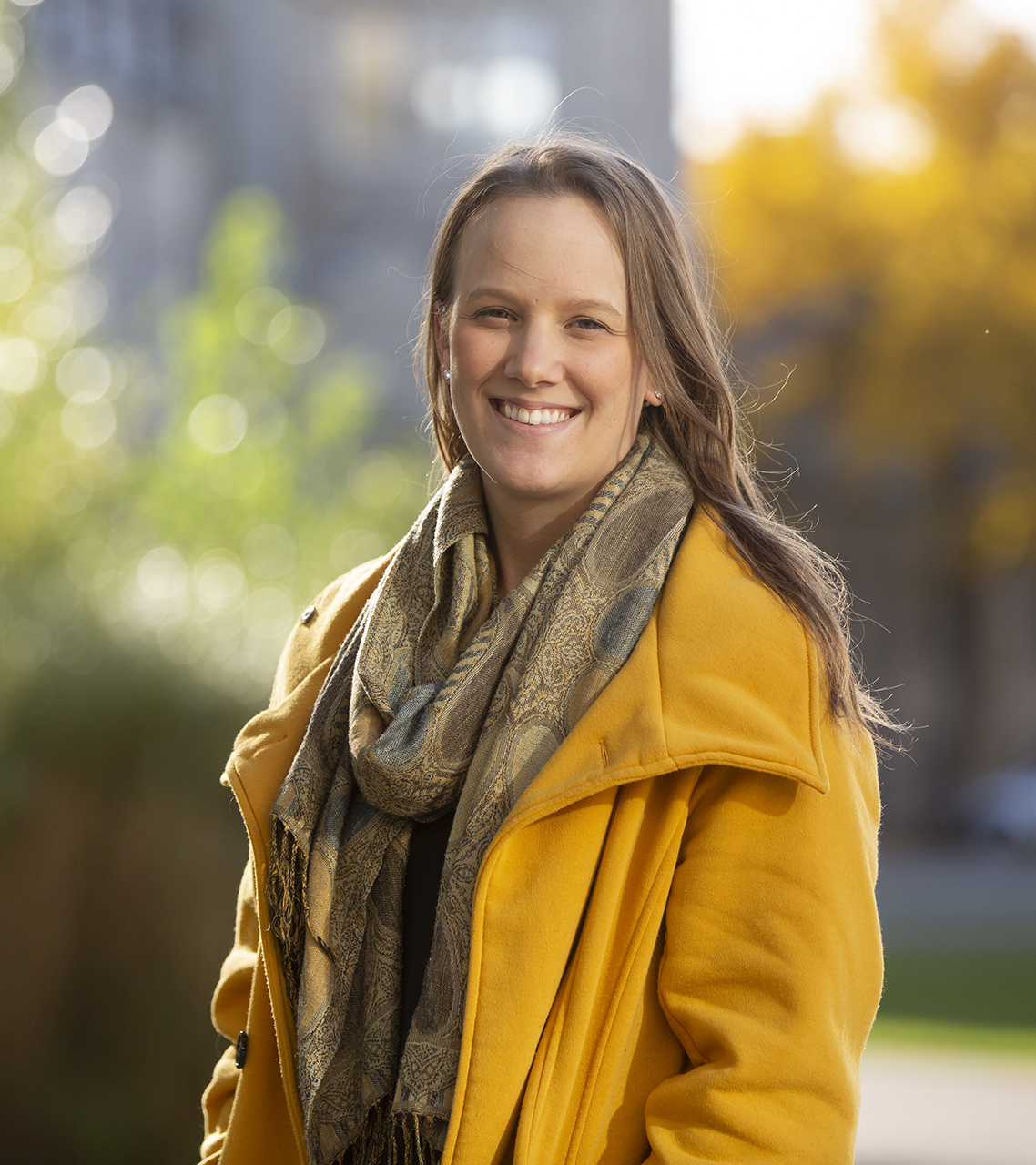
USask unites: Stepping up from the sidelines
From raising tens of thousands of dollars for needed supplies in La Loche to helping health care workers from the sidelines, medical students felt called to help Saskatchewan communities during a global pandemic — the same communities they are being trained to serve as physicians.
By Kristen McEwenAs COVID-19 arrived in Saskatchewan in March 2020, lives were put on hold while people across the province joined the world in trying to figure out the novel coronavirus.
Medical students at the University of Saskatchewan (USask) were no exception as their clinical education came to a sudden halt. While students continued with remote learning and returned to clinical learning by late May, third-year students momentarily found themselves on the sidelines as their teachers and mentors battled the virus.
“It just felt really crazy to have school put on hold,” said current third-year medical student Jessica Froehlich. “If you had asked me before (COVID-19), I would have had trouble coming up with any reason, or catastrophe to cause our medical school curriculum to be on hold.”
At the time, Froehlich was a second-year medical student based in Regina. Two of her favourite things about medical school were seeing patients and participating in extracurricular activities—both of which were not allowed during the initial months of the pandemic.
“I think I was trying to keep my head above water and navigate this,” she said.
As it became clear that COVID-19 was here to stay, gaps within communities began to appear. The closure of businesses and organizations—some temporary, some permanent—meant loss for many, including access to community centres, restaurants and stores.
“Many of us started thinking about the things we could do to make a meaningful difference to support people in the pandemic, as medical students,” Froehlich said. “With the restrictions caused by COVID-19, we were starting to see a lot of needs and we were wanting to be responsive to our communities.”
Students take the initiative
One of the first student volunteer initiatives in response to the pandemic came about because of the increased demand on health care providers as they worked through COVID-19. A group of medical students formed Students 4 HCPs (Health Care Professionals) so they could support their mentors and teachers ethically and safely.
The group of about 80 students volunteered their time to help in any way they could—from child and pet care to pharmacy and grocery runs. This was largely inspired by other medical student movements to support physician leaders across Canada. The USask team was run by Sehjal Bhargava, Jessica Froehlich, Sarah White, Alexa McEwen, Tayyaba Bhatti and Colten Molnar.
As cases rose in Saskatchewan, calls to HealthLine 811 grew as people wondered what symptoms to look for and if they should be tested.
About 200 USask health science students began volunteering their time with Public Health and Infection Prevention and Control in Saskatoon, Regina and Prince Albert. They formed the Saskatchewan Public Health Student Task Force, led by medical students Sehjal Bhargava, Kate Morrison, Amira Muftah, Samuel Simonson and Jessica Froehlich.
“I think working with Public Health really hit home for me,” Bhargava said. “It was a way for us to help out without getting in the way. Lots of people were worried about the virus and the hotlines were off-the-charts busy.”
About 160 medical students from across Saskatchewan volunteered to work overtime to answer 811 calls, log symptoms, schedule testing, and deliver negative test results back to patients. Dr. Jasmine Hasselback coordinated the volunteer medical students for HealthLine 811.
Freeing up public health professionals to work on the front lines also resulted in an educational experience for medical students, Bhargava explained.
“We learned about the virus itself, learned about what people were most concerned about, what it takes to run a pandemic response and the collaboration and importance of communication,” she said.
While helping with contact tracing, about 15 students also began collecting personal protective equipment for the Saskatchewan Health Authority, as a PPE shortage was becoming a concern. Students were on the ground, soliciting businesses and individuals to donate any spare PPE they had. They picked up and dropped off equipment, and even stored PPE at their houses until it could be delivered to the Saskatchewan Health Authority, where it could be distributed to whichever community needed it the most.
“We find these gaps in the community and address them,” Bhargava said. “That’s the power of medical students—a little bit of passion, a little bit of creativity.”
Donations for La Loche

Starting in late April, communities in northern Saskatchewan were seeing a high number of cases of COVID-19. To prevent spread of the disease, the Government of Saskatchewan ordered travel restrictions for northern communities. This impacted access to resources for many in these communities, including cleaning supplies and PPE.
Third-year medical student Kate Morrison worked with Dr. Kendra Morrow, a Saskatoon physician and assistant professor in the Department of Family Medicine, to raise funds for the community of La Loche, which experienced an outbreak at the end of April.
On May 7, several medical students put the call out through social media to raise money to purchase supplies. About 30 active medical student volunteers soon set out to shop for supplies and packed boxes for families in La Loche and surrounding areas, located about 600 kilometres northwest of Saskatoon.
In the span of two weeks, the group raised more than $50,000, which resulted in two transport trucks travelling to La Loche and area to deliver supplies. Medical students worked with local organizers and northern community leaders to ensure that the correct supplies were being purchased before being sent.
“Looking back, it was incredible to see how quickly and willing everyone was to donate – there was a lot of people supporting it,” Morrison said. “Everyone got together around the idea of supporting the north during the outbreak. It was amazing to see everyone come together.”
Combating social isolation
While then third-year student Masooma Bhatti was volunteering with contact tracing, she found that it was sometimes difficult to end phone calls immediately after delivering results and necessary information to older adult patients. In light of the pandemic, some older adults had their face-to-face interactions cut off as people were encouraged to stay home to prevent the spread of the virus.
“It became quite evident to me how much fear was out there and how lonely it can feel,” Bhatti said. “I actually remember speaking to this one older adult in particular, and it was heartbreaking to hear she was no longer able to visit with her grandkids. She just wanted to talk.”
Bhatti came across an initiative that originally began in Toronto, the Student-Senior Isolation Prevention Program (SSIPP). She reached out to the organization and offered to start a chapter in Saskatchewan.
SSIPP partners student health professionals with older adults in the community, offering regular weekly visits over the phone, and sometimes virtually, while also distributing critical information about COVID-19.
“During the past couple of months we have made calls on a weekly basis to offer some support, hope, encouragement and most importantly, friendship,” Bhatti said.
About 40 USask medical students signed up for this initiative at the beginning of the pandemic, prepared to connect with older adults. Since then, pairings came to a natural end as families were able to reunite in person. Currently, there are about nine active pairings that continue their weekly visits virtually and over the phone.
“Social isolation is one of the most prevalent issues faced by older adults today,” Bhatti said. “It can result in negative health outcomes for older adults, including higher incidence of chronic diseases, mortality rates and negative mental health outcomes.”
How will the pandemic impact the future?
While curriculum, classes and clerkships are moving forward once more in the fall 2020 semester with limitations, the first months of the virus were “uncharted territory,” Froehlich said.
“What we did I don’t think was anything too out of the ordinary for students who were in the health sciences,” she added. “In Saskatchewan, we have such strong communities and we just want to help each other.”
While the pandemic put a hold on aspects of their medical education, it also reaffirmed other aspects of their medical careers. Now a third-year student, Bhargava has always advocated medical students be engaged in their communities.
“Without having a sense of purpose (during the pandemic), I would have felt so helpless,” she said. “Being able to coordinate and rally, knowing we were giving back in whatever small way we could, helped me get through the pandemic. It was really affirming that this was the work I wanted to do.”
Bhatti noted that the volunteer initiatives she participated in, as well as establishing SSIPP, allowed her to work with vulnerable populations she will be working with as a physician.
“It’s quite eye opening to be introduced to working with these populations (during a pandemic),” she said. “No matter which field of medicine I decide to work in, I’m going to be interacting with older adults and learn about resources available and how it affects them.”
When faced with the pandemic seeping into their communities, medical students searched for ways to help from the sidelines, while also bringing some normalcy and control back into their lives.
“Personally, I think it was a really nice way to be involved in the community that we work in normally, but not directly in a clinical context,” Morrison said. “And it was a reminder for myself—wanting to stay involved in the community in ways other than medical practice.”
“It’ll be an interesting time to look back on,” she added. “Not many people will go through medical school and also respond to a pandemic.”
This story first appeared in the 2020 edition of Connective Issue.
Article re-posted on .
View original article.

